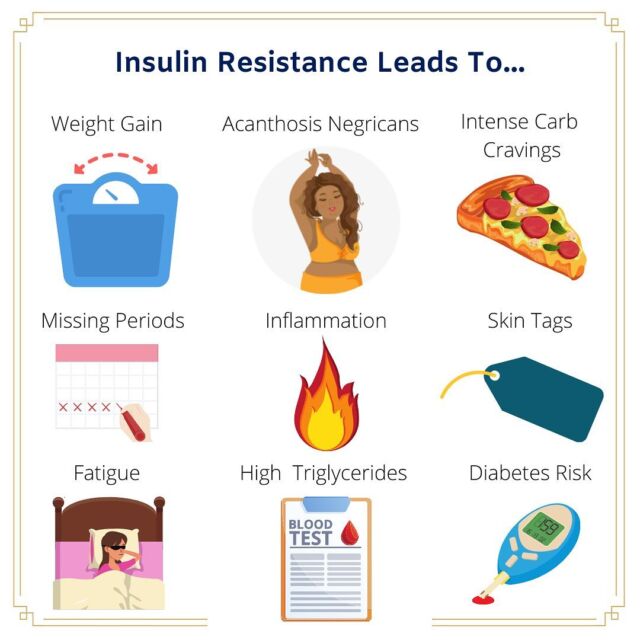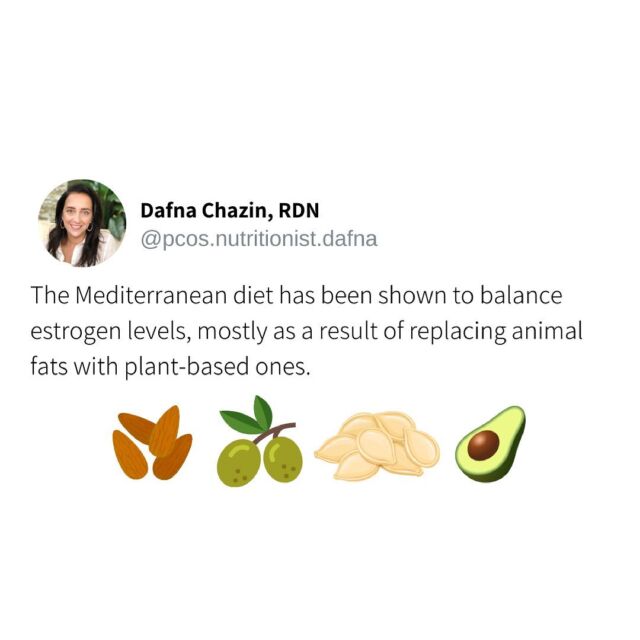Controlling PCOS Cravings Is As Easy As 1-2-3
Quick fact of the day: 99% of women with PCOS report dealing with cravings for sugar and carbs. Yup, that means everyone has a hard time controlling PCOS cravings… so those constant sugar cravings are definitely NOT all in your head.
Cravings are in fact, one of the biggest concerns my PCOS clients face – which often makes it harder for them to reach their weight or health goals. After all, thinking about food all day and figuring out how to control the fixation on those pantry cookies or chips can seriously take over your brain!
In this article I’ll be diving into the 3 main reasons constant food urges may be an issue for you and how to start controlling PCOS cravings naturally. Yes, it’s 100% possible with my simple strategies that have been proven to reverse this super common issue.
First up, let’s understand what a craving is.
In this article a craving is defined as “an intense desire for a specific food. This desire can seem uncontrollable, and a person may feel as though they cannot satisfy their hunger until they get that particular food”.
Makes sense, right? this is exactly what women I work with describe about their daily cravings.
![]()
![]()
![]()
![]()
While cravings aren’t always convenient or comfortable, they’re sometimes normal. They are a part of our body’s hunger and satiety (feeling of fullness) cycles that all humans experience. As such, they can occur sporadically throughout the month and still be considered perfectly normal (especially around your menstrual cycle). However, when cravings become a daily occurrence and seem insatiable, we need to address their root cause and restore your body’s fullness cues to you don’t have to constantly ask yourself “what can I eat next??”. Instead you’ll find the controlling PCOS cravings is actually pretty simple. Let’s dive in!
Here are 3 common root causes of sugar & carb cravings:
Craving Root Cause 1: Poor Appetite Control
Appetite control is so essential for keeping cravings at bay. After all, if you’re constantly hungry – your desire for food will grow throughout the day and set you up for overeating, or even binging, on snacks, sweets and easy carbs after dinner.
Don’t worry, we’ve all been there!
I see 2 common appetite control mistakes women in my program make…
Eating meals that are TOO SMALL!
Yes, you heard that right – eating too little will keep your body wanting more and craving those high energy foods like desserts, ice cream, chocolate and cookies.
Your main meals should be able to keep you full for at least 3-4 hours and reduce the need for snacking in between. This means you’re not really feeling the urge to eat during this time, in fact, the thought of food may make you feel uncomfortable since you’re so satiated (satiated = full). To achieve this, your meals need to be substentail in volume (one of the best ways to bulk up your plate is with non-starchy veggies!), include at least 20g of protein and have a serving of fiber-filled carbs (depending on the meal this could be a sweet potato, quinoa, sprouted bread, oatmeal, beans, lentils, winter squashes). Don’t short-change yourself – eat a plate full of food to keep you from munching on random snacks later on. This will tame even the most stubborn cravings!Skipping meals – especially BREAKFAST!
Skipping meals is a surefire recipe for major sugar cravings. This is because when a meal is skipped, your blood sugar will often drop, which signals your brain to crave refined carbs – the main energy source for your body! I see this happening frequently with women who skip breakfast as part of intermittent fasting. They have a window of eating that starts at 1p, for example. Studies confirm that when we skip the morning meal and start eating in the afternoon hours our body will “overreact” and produce higher levels of insulin than would be expected. This is why, many times, women feel like they can’t “catch up” after skipping breakfast and are overly hungry for the rest of the day, despite eating lunch and dinner. High insulin levels are a major contributor to cravings.
If this ever happened to you, you’re perfectly normal and there’s nothing wrong with your “system”. You simply need to start eating earlier and stay consistent with meal timing daily. I recommend eating breakfast within 90 minutes of waking up and ensuring that it includes a mix of protein and carbs to kick start your metabolism. This will make controlling PCOS cravings a lot easier…. Want some specific PCOS breakfast ideas as well as balanced recipes to tame sugar urges? Grab a copy of my free Craving Cure Checklist.
Craving Root Cause 2: Blood sugar fluctuations
This is pretty basic, but super important – your hormonal balance as well as appetite are heavily dependent on your blood sugar balance. When your blood sugar peaks and drops during the day, your hunger and cravings will constantly fluctuate as well. This means more cravings at random times and an inability to stay full for more than an hour. Sounds familiar? Keep reading if so….
The best way to manage your blood sugar is to first choose higher quality carbs. This specifically means you’re opting for high fiber options since they take longer for the body to digest – this is a good thing since slower digestion means slower rise in your blood sugar.
Try looking for higher fiber bread such as sprouted bread, add beans to your salads and soups and choose whole grain versions of sides such as rice and pasta.
Next up, be sure to spread carbs evenly throughout the day as opposed to eating them in one sitting.
Oftentimes, women will eat meals that contain a large amount of “good” carbs, thinking this is healthy and balanced. However, this too can lead to sugar spikes since ALL carbs break down to sugar in your body – this is normal and desirable but we need to spread out these carbs strategically. For example, instead of combining oatmeal with dried fruit, banana and orange juice, try swapping the banana for a protein-rich food such as cottage cheese or 2 hard boiled eggs. You can definitely still eat the oats but pair them with a protein source as opposed to another carb – makes sense?
Want more carb smart strategies?
Check out my podcast episode 5 Smart Way to Eat Carbs!

Craving Root Cause 3: Emotional triggers – AKA: it’s NOT about what you’re eating, it’s what’s eating YOU!
Cravings can often be closely tied to emotions. Using food as an emotional crutch for “stuffing down” sadness, anxiety, and even boredom is a common coping mechanism. However, it’s not particularly effective in most cases.
If you find yourself heading to the pantry every time a stressful situation arises, take a pause and think about what you’re REALLY feeling. Food is seldom a long-term solution to an emotional issue. In fact, it can make you feel worse and trigger guilt, regret and shame.
I teach my clients to think about emotional cravings like a wave in the ocean… They often start slowly, but then reach a peak quickly and eventually crash. Allowing this wave to rise and fall without immediately reaching for food, can break the habit of emotional eating and help control cravings.
What you can do…
If emotional cravings happen in your day, I suggest you do the following; Take a short pause, usually 2-3 minutes, to sit with the uncomfortable feeling and “observe” your craving… Ask yourself: Is food really what I need right now? will eating help me meet my health goals? What other activity can I try to process this feeling and allow it to pass?
During this time you can distract yourself by journaling, walking outside or completing a house chore. Then, re-evaluate if the urge to eat is still there. If it is, go ahead and put some food on a plate, sit down at a table and eat mindfully. Otherwise, continue on with your day. When you repeat this each time an emotional eating episode comes up, you’ll train your brain to stop reacting to the craving and, instead, respond in a more thoughtful way. Since most emotional eating happens at night, you may want to check out this podcast episode about nighttime eating.
Let’s wrap up!
I hope these strategies will help you control cravings more successfully and provide simple yet effective ways to stay on top of PCOS symptoms.
If you’re ready to take action and dive more deeply into the daily habits that control cravings, don’t forget to grab a copy of my Craving Cure Checklist right here. It includes recipes, a meal planner and lots of valuable tips for you!
See you next week!
Want more PCOS tips & helpful info? Check out the links below!
Join my free FB group PCOS Insiders: https://www.facebook.com/groups/pcosinsiders/
Connect with me on Instagram @pcos.nutritionist.dafna
 Unsure if you have insulin resistance (IR)? W
Unsure if you have insulin resistance (IR)? W
 Just sayin’ I hope these people
Just sayin’ I hope these people
 Are you self sabotaging by waiting On motivati
Are you self sabotaging by waiting On motivati
 Did you know that certain toxins in our env
Did you know that certain toxins in our env
 Hands up for quick, balanced & delicious
Hands up for quick, balanced & delicious 
